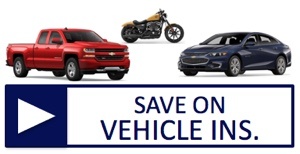 While business insurance is your safety net for financial loss from theft, it's better to minimize the chance of your business becoming a victim of theft in the first place.
While business insurance is your safety net for financial loss from theft, it's better to minimize the chance of your business becoming a victim of theft in the first place.
Unfortunately, most businesses become victims of theft at some point. In fact, the most serious thefts can drive them out of existence.
Business owners and their managers need to first acknowledge that it can happen and then take the necessary steps to prevent it…or at least to minimize the loss.
Insuring Against Four Types of Theft
There are four types of theft: burglary, robbery, theft by employees, and identity theft. Each of these has its own set of challenges and preventive measures. Check with your independent insurance agent to be sure your commercial insurance coverage adequately protects you against each of these categories of business theft.
#1. Insuring Against Burglary:
Unlawful Entry with Intent to Steal
Burglars enter your business when no one is there. They mainly target your cash, merchandise and equipment, but they may also commit a host of other felonies.
Thieves like to work in the dark, so visibility is your first line of defense here. Bright interior lights deter illegal entry, especially if your building can be seen from the street. Exterior lights, protected with metal cages, may discourage them from approaching at all. This is a good start, but there are other equally important steps you can take to prevent a break-in:
- An alarm system with motion detectors
- Steel doors with dead bolt locks
- A see-through fence (i.e., chain link)
- Windows with safety glass and locks
- Padlocks on overhead doors
#2. Insuring Against Robbery:
Taking Cash or Valuables from a Person
If your business deals in cash or smaller valuables, you are susceptible to being robbed. This could happen either by force or the threat of force. To keep it from happening at all, there are things you can look for and actions you should take:
- Keep cash to a minimum
- Post signs indicating the maximum amount of cash on the premises
- Be alert – look for signs of danger
- Recognize potential hiding places near your business
- Provide bright lights and good visibility to deter robbers
Being robbed will be traumatic. Your managers and employees need to be trained to react properly if all preventive measures fail. Here are some guidelines to remember during and immediately after a robbery:
- Cooperate with the robber
- Obey orders quickly
- Don’t argue or fight
- Don’t use a weapon
- Don’t chase or follow the robber
- Call the police
#3. Insuring Against Employee Theft:
An Insidious Crime
Business owners don’t want to believe that a trusted employee is stealing from them. As a result, most of this theft goes undetected. It is estimated that businesses may be losing as much as forty billion dollars each year to this crime. It is crucial that you work with your accountants regularly to spot the following signs:
- Changes in sales and inventory without a corresponding increase in profits or cash flow
- Shipping records that are not consistent with inventory
- Unauthorized changes in paperwork or established procedures
As a business owner, you need to be aware that loyal employees may steal, as do well-paid executives and workers who have been with you for many years. Encourage all employees to report their suspicions and concerns. Tell them what to report and how to do it. Work diligently with your accounting staff to catch inconsistencies early.
#4. Insuring Against Identity Theft:
Not Just a Consumer Problem
Business identity theft is growing, and the consequences are enormous. It affects your entire business, including employees, customers, and suppliers. Identity thieves can tap into your credit lines, change your contact information, then order supplies or obtain credit cards. They can also go after your customers. Defend against them by doing the following:
- Securely lock up any paper data and shred it when it’s outdated
- Make sure networks are password protected and have a firewall
- Install security software on any mobile devices that contain confidential company data
Protect Your Business From Theft - Get the Right Commercial Insurance
 If, in spite of all these measures, your business is still a victim of theft, the right business insurance can help.
If, in spite of all these measures, your business is still a victim of theft, the right business insurance can help.
Don't wait until your business takes a hit. Be proactive: Call American Insuring Group at (800) 947-1270 or (610) 775-3848, or click here to contact us.


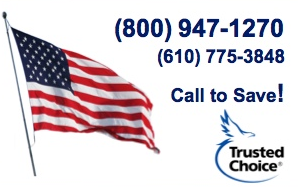
 If you own a child care business, you’re probably familiar with the specific rules you must follow and specific certifications you must obtain in order to legally operate your business. In Pennsylvania, child care and early learning providers operating a program for four or more unrelated children must be certified by the Pennsylvania Department of Human Services.
If you own a child care business, you’re probably familiar with the specific rules you must follow and specific certifications you must obtain in order to legally operate your business. In Pennsylvania, child care and early learning providers operating a program for four or more unrelated children must be certified by the Pennsylvania Department of Human Services. To learn more about protecting your business and your customers (both big and small) with the proper commercial liability insurance, give us a call at
To learn more about protecting your business and your customers (both big and small) with the proper commercial liability insurance, give us a call at 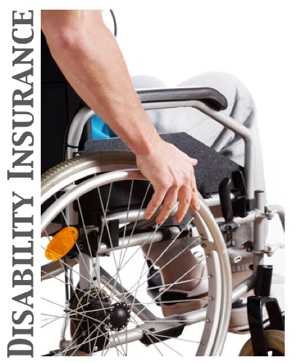 Bill is 50-year-old department manager for a mid-sized manufacturer. Even though he has never been seriously ill and has a clean family health history, he was recently told that he has cancer.
Bill is 50-year-old department manager for a mid-sized manufacturer. Even though he has never been seriously ill and has a clean family health history, he was recently told that he has cancer. Get the Right Disability Insurance Coverage
Get the Right Disability Insurance Coverage Changing your
Changing your  Need help finding a good TPA?
Need help finding a good TPA? Why Home Security Should be a Priority
Why Home Security Should be a Priority Get a Homeowners Insurance Checkup for Your Peace of Mind
Get a Homeowners Insurance Checkup for Your Peace of Mind Do you live under a rock? No? Then it’s pretty safe to say that you’ve heard about the Affordable Care Act (ACA) – Also known as Obamacare - that was signed into law in March 2010.
Do you live under a rock? No? Then it’s pretty safe to say that you’ve heard about the Affordable Care Act (ACA) – Also known as Obamacare - that was signed into law in March 2010.  Get Help - Find the Right Health Insurance for Your Small Business
Get Help - Find the Right Health Insurance for Your Small Business
 Every small business should conduct a risk management assessment prior to reassessing their
Every small business should conduct a risk management assessment prior to reassessing their 
 Every home-based business should be protected by commercial insurance. But the growth of the internet and other technological advancements –such as social collaboration tools and communication apps - have changed the way many of us do business today and significantly influenced the number of small businesses nationwide. In addition, the low start-up costs; the reduction in the cost of commuting, meals, and other expenses; the flexibility; and the savings realized from not maintaining a “storefront” are creating more home-based businesses. Sometimes home-based business owners forget that their homeowner's policy is unlikely to cover them for liabilities that can occur in their business.
Every home-based business should be protected by commercial insurance. But the growth of the internet and other technological advancements –such as social collaboration tools and communication apps - have changed the way many of us do business today and significantly influenced the number of small businesses nationwide. In addition, the low start-up costs; the reduction in the cost of commuting, meals, and other expenses; the flexibility; and the savings realized from not maintaining a “storefront” are creating more home-based businesses. Sometimes home-based business owners forget that their homeowner's policy is unlikely to cover them for liabilities that can occur in their business.
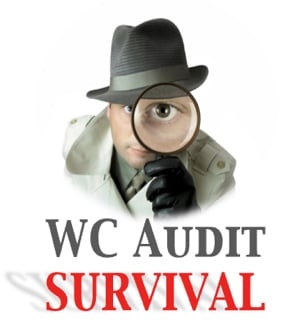 Workers Compensation Premium Audits - a necessary evil (some would say) for any employer - determines the final cost of your
Workers Compensation Premium Audits - a necessary evil (some would say) for any employer - determines the final cost of your  For more information about premium audits or how to get the best deal on
For more information about premium audits or how to get the best deal on 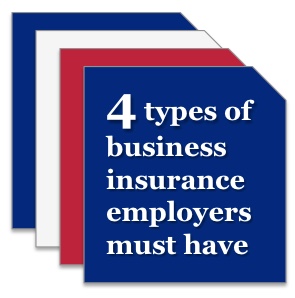 You’re about to become an employer. Maybe you’ve been in business for a while, but now you’re ready to hire your first employee. You’re excited; this means your business is growing. Or, maybe you’re just starting a business and you need employees to help run that business.
You’re about to become an employer. Maybe you’ve been in business for a while, but now you’re ready to hire your first employee. You’re excited; this means your business is growing. Or, maybe you’re just starting a business and you need employees to help run that business. 